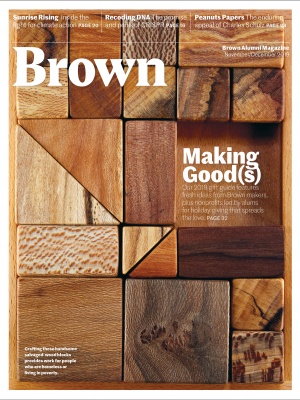In 2001, the Brown Daily Herald published a David Horowitz ad arguing against slavery reparations. Student activists confiscated the issue; national headlines questioned freedom of expression at Brown.
In 2013, NYC police commissioner Ray Kelly, architect of stop-and-frisk policing—widely seen as racist—came to speak on campus. Protestors shut down the event.
In 2015, the BDH published two opinion columns: one relied on the (unscientific) notion that racial differences are biological; another asked native peoples to be grateful for colonialism. Student groups vowed to boycott the paper.
Out of these racially charged controversies grew institutional change. Brown initiated its Slavery and Justice Report and adopted Indigenous People’s Day. It also continued to support freedom of expression: new rules barred protests from shutting down events and when Horowitz spoke on campus in 2003, then-president Ruth Simmons sat in the front row. But engagement over these issues is far from over. And last issue, the campus free speech vs. hate speech debate came to BAM’s letters section.
Some background: Historically, the BAM has not censored letters for opinion, even opinions that offend those of us on staff. We don’t allow vulgarity, known factual errors, or ad hominem attacks, and we edit for clarity and length, but beyond that we publish every letter online or in print. We think of the BAM’s letters section as the only place where readers can give their opinions, unfiltered by our opinions.
That’s how a letter opining that everyone should “get over” Brown’s links to slavery came to be in our Sept/Oct issue. A selection of the letters that responded in protest starts on page 6; all related letters are at brownalumnimagazine.com.
The outcry highlights changing sentiments around the tension between freedom of expression and harm. It’s a national shift: a recent Gallup/Knight Foundation survey found a seven-point increase among college students who thought offensive speech should be banned on campuses, from 22 percent in 2016 to 29 percent just one year later.
All of us at BAM found the letter abhorrent. The BAM’s historic commitment to free expression doesn’t mean we don’t care or would ever want any reader to feel unwelcome. So we’ve been doing a lot of soul searching. In publishing the original letter, did we, as protestors say, normalize slavery apologism? The opinion expressed may not have been so far from mainstream. A Pew Research Center study this year found 41 percent of whites and 56 percent of Republicans think the legacy of slavery affects black people’s lives in the U.S. today “not much” or “not at all.” By contrast, 8 in 10 black adults believe the opposite, and 64 percent think it’s unlikely the country will ever achieve racial equality.
In a context of such deep and painful divisions, we wonder: Is the letters page a forum, a space that belongs to all alumni, as the BAM has traditionally seen it? Or is it a platform that must be guarded? And as the BAM’s readership changes with each group of new graduates, how does that affect the magazine’s long-held understanding of what our community values—and wants—in the content it is exposed to? And should it change our thinking about which letters we publish or whether we should use disclaimers or trigger warnings?
In practical terms, if we censor opinions we find abhorrent, where and how do we draw the line? And what would this mean for a magazine dedicated for more than a century to bringing to light issues that need to be confronted and interrogated? As we consider these questions, we’d like to hear from you. Please consider writing to let us, and other BAM readers, know what you think.




